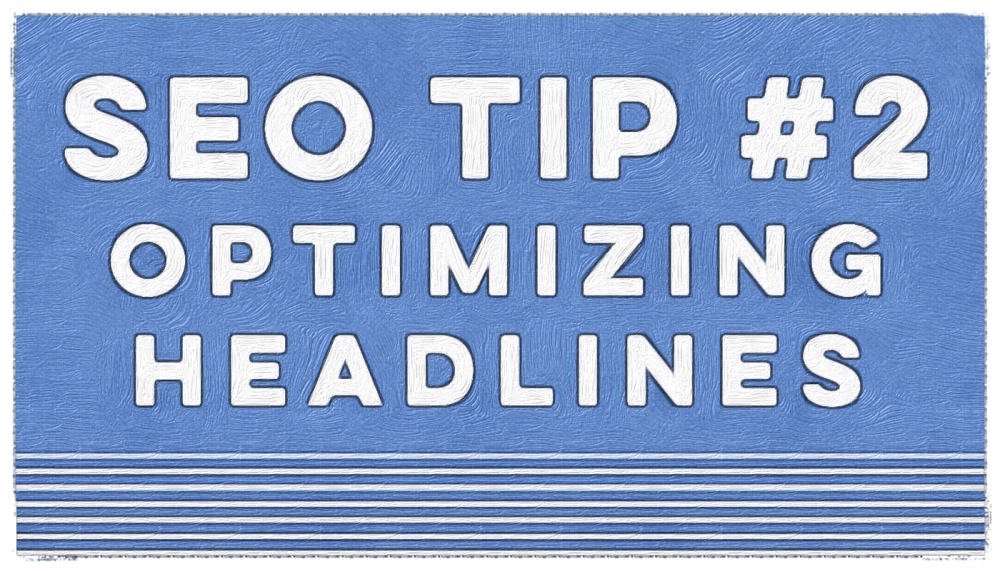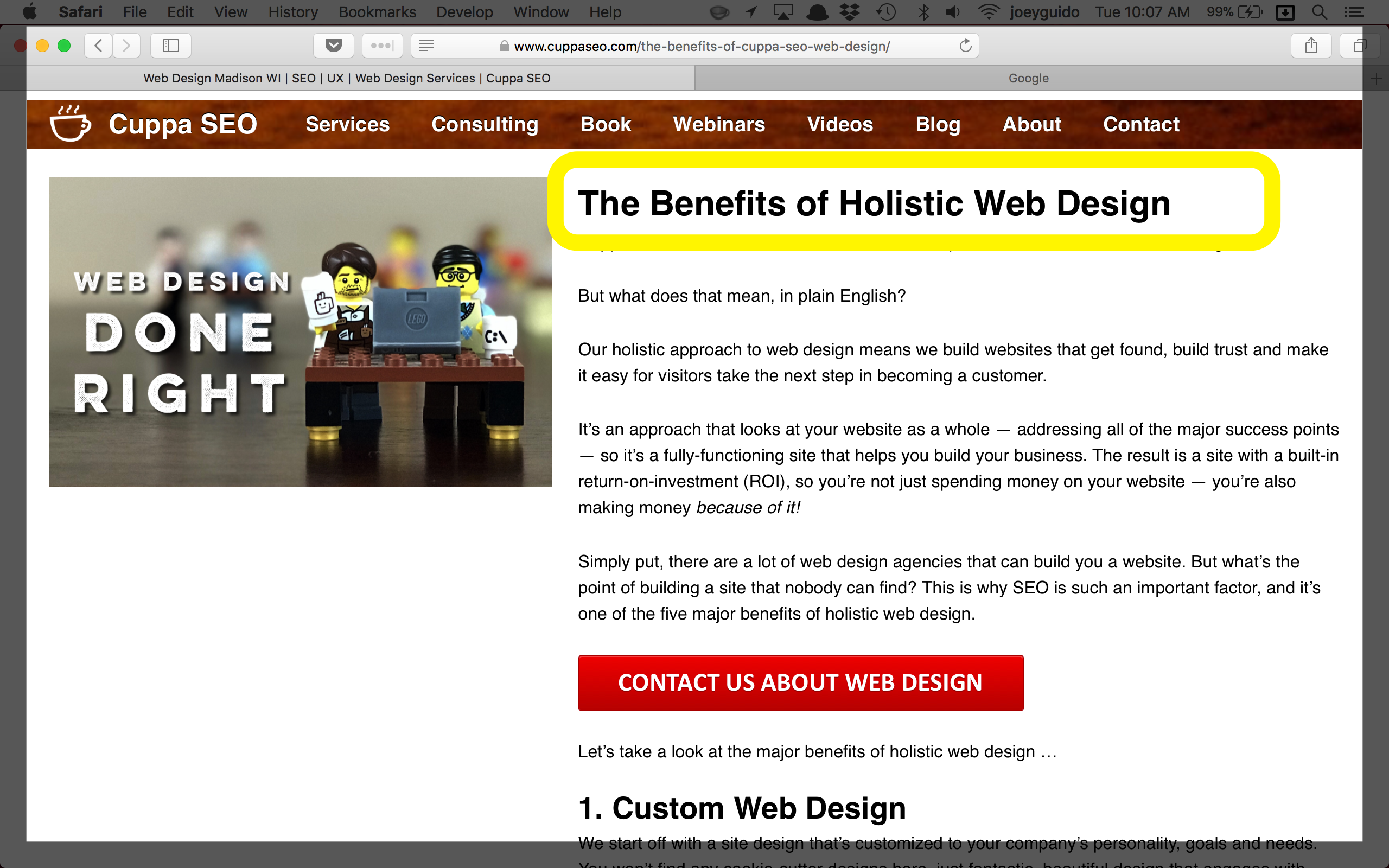 In the first part of our SEO Tips series we talked about the importance of optimizing your title tags. Here, in part 2, we’ll discuss optimizing page headlines (also referred to H1 headlines).
In the first part of our SEO Tips series we talked about the importance of optimizing your title tags. Here, in part 2, we’ll discuss optimizing page headlines (also referred to H1 headlines).
To begin, each headline on your website and blog should be clear and compelling to the human eye. And, whenever possible, you’ll want it to include an optimized keyword or keyword phrase in your headline. I say “whenever possible,” because we never want to sacrifice the quality of our content for the sake of search engine optimization (SEO).
While your clear headline helps the reader understand what your web page or blog post is about, it’s the keyword phrase that helps Google understand what it’s about, which is why we always strive to have both good writing AND solid SEO in our headlines.
In other words, implementing relevant keywords into each headline can help clarify page content and increase website authority with search engines.
As an example, let’s take a look at the Cuppa SEO Web Design page …
Sure, it’s a simple headline, but it’s clear and also includes the keyword phrase, “web design.”
It’s a good idea to optimize all types of headlines, but the three most widely used are:
- H1 Headline: This is the primary headline on a page.
- H2 Headline: This is the secondary headline that can appear on a page.
- H3 Headlines: These are the smaller, third-tier headlines that can appear on a page.
Keep in mind that a web page or blog post should only have one H1 and one H2 headline. More than one H1 or H2 adds ambiguity to the page hierarchy, leaving Google questioning what’s most important on the page, so avoid this mistake. If you want to use multiple headlines to help segment content, which I highly recommend, stick with H3s (we’ll talk about these more in a later installment of this series).
Next up in our SEO Tips series we’ll cover optimizing the images on your website.
Need assistance right away?
Feel free to contact with Cuppa SEO to schedule a time to talk.
